|
BIBLIOGRAPHIE
• La bibliographie
présente:
-
Les ouvrages traitant de l'entraînement
en hypoventilation
-
Les études
scientifiques sur l'entraînement en hypoventilation
-
Les articles
scientifiques sur les effets
de l'exercice en hypoxie et servant de support aux études
sur l'entraînement en hypoventilation
• Les résumés des différentes
études sont accessibles, via le moteur de recherche de données
bibliographiques "Pubmed" par simple clic sur les liens
correspondant.
• L'intégralité de
certaines de ces études (format pdf) peuvent être obtenues:
- Sur simple
demande pour les membres de l'ARPEH
- En effectuant un
petit don à l'ARPEH pour les personnes qui ne sont pas membres
1)
OUVRAGES SUR L'ENTRAINEMENT EN
HYPOVENTILATION
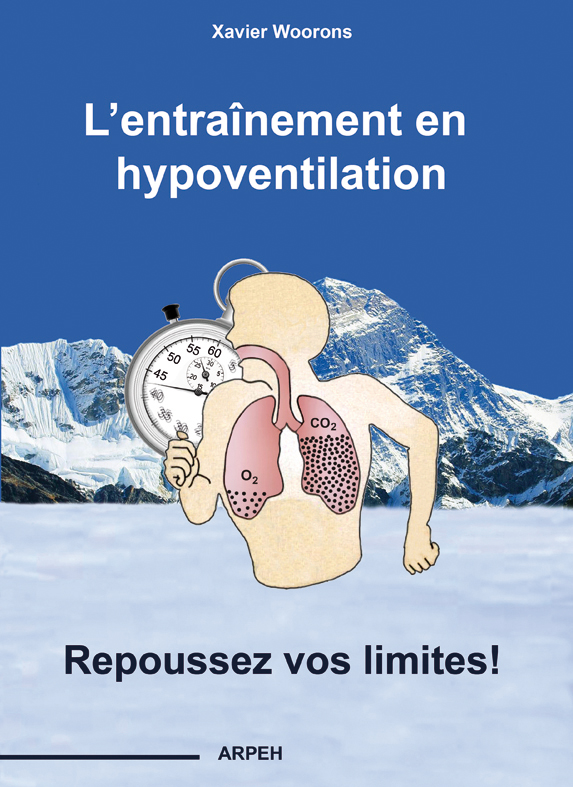 Xavier
Woorons. L'entraînement en
hypoventilation, repoussez vos limites!.
Ed.
ARPEH, Lille, France,
2014. Xavier
Woorons. L'entraînement en
hypoventilation, repoussez vos limites!.
Ed.
ARPEH, Lille, France,
2014.
2)
ETUDES SCIENTIFIQUES SUR L'ENTRAINEMENT EN
HYPOVENTILATION
 Woorons
X, Mucci P,
Aucouturier J,
Anthierens A, Millet GP.
Acute effects of repeated cycling
sprints in hypoxia induced by voluntary hypoventilation.
Eur J Appl Physiol..
117:2433-2443, 2017. Woorons
X, Mucci P,
Aucouturier J,
Anthierens A, Millet GP.
Acute effects of repeated cycling
sprints in hypoxia induced by voluntary hypoventilation.
Eur J Appl Physiol..
117:2433-2443, 2017.
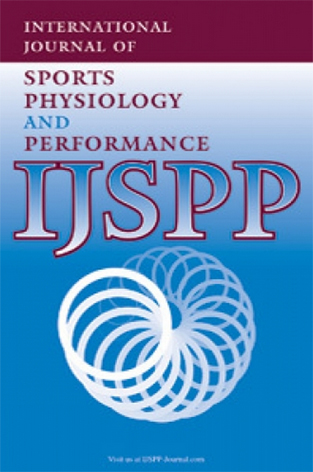 Trincat
L,
Woorons
X, Millet GP.
Repeated Sprint Training in Hypoxia Induced by Voluntary
Hypoventilation in Swimming.
Int J Sports Physiol Perform.
Aug 24:1-24, 2017. Trincat
L,
Woorons
X, Millet GP.
Repeated Sprint Training in Hypoxia Induced by Voluntary
Hypoventilation in Swimming.
Int J Sports Physiol Perform.
Aug 24:1-24, 2017.
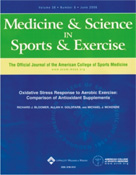 Woorons
X, Mucci P, Richalet JP,
Pichon A.
Hypoventilation training at supramaximal intensity improves
swimming performance.
Med Sci Sports
Exerc. 37:147-154, 2016. Woorons
X, Mucci P, Richalet JP,
Pichon A.
Hypoventilation training at supramaximal intensity improves
swimming performance.
Med Sci Sports
Exerc. 37:147-154, 2016.
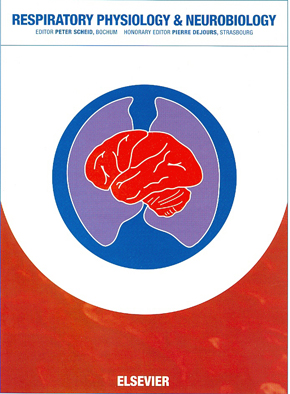 Woorons
X, Gamelin FX,
Lamberto C,
Pichon A,
Richalet JP.
Swimmers can train in hypoxia at sea
level through voluntary hypoventilation.
Respir Physiol Neurobiol.
190:33-39, 2014. Woorons
X, Gamelin FX,
Lamberto C,
Pichon A,
Richalet JP.
Swimmers can train in hypoxia at sea
level through voluntary hypoventilation.
Respir Physiol Neurobiol.
190:33-39, 2014.
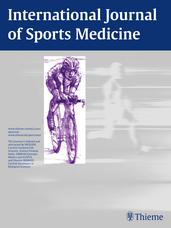 Woorons
X,
Bourdillon N, Lamberto C,
Vandewalle H, Richalet JP, Mollard P, Pichon A.
Cardiovascular responses during
hypoventilation at exercise.
Int J Sports Med.
32:438-445, 2011. Woorons
X,
Bourdillon N, Lamberto C,
Vandewalle H, Richalet JP, Mollard P, Pichon A.
Cardiovascular responses during
hypoventilation at exercise.
Int J Sports Med.
32:438-445, 2011.
 Woorons
X, Bourdillon N, Vandewalle H, Lamberto C, Mollard P,
Richalet JP, Pichon A.
Exercise with hypoventilation induces
lower muscle oxygenation and higher blood lactate concentration:
role of hypoxia and
hypercapnia.
Eur J Appl Physiol..
110:367-77, 2010. Woorons
X, Bourdillon N, Vandewalle H, Lamberto C, Mollard P,
Richalet JP, Pichon A.
Exercise with hypoventilation induces
lower muscle oxygenation and higher blood lactate concentration:
role of hypoxia and
hypercapnia.
Eur J Appl Physiol..
110:367-77, 2010.
 Millet
G, Roels B, Schmitt l, Woorons X, Richalet JP.
Combining hypoxic
methods for peak performance.
Sports Med. 40:1-25, 2010. Millet
G, Roels B, Schmitt l, Woorons X, Richalet JP.
Combining hypoxic
methods for peak performance.
Sports Med. 40:1-25, 2010.
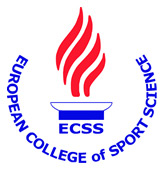 Woorons
X,
Bourdillon N, Vandewalle H, Lamberto C,
Mollard P,
Richalet JP, Pichon A.
14th annual Congress of the
European College of sport science, Oslo, Norway, June 24-27th,
2009. Effects of prolonged exercise with voluntary
hypoventilation on muscle oxygenation and blood lactate
concentration. Woorons
X,
Bourdillon N, Vandewalle H, Lamberto C,
Mollard P,
Richalet JP, Pichon A.
14th annual Congress of the
European College of sport science, Oslo, Norway, June 24-27th,
2009. Effects of prolonged exercise with voluntary
hypoventilation on muscle oxygenation and blood lactate
concentration.
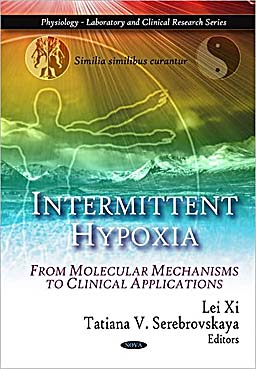 Millet
G, Woorons X, Roels B.
Effects of intermittent hypoxia training on peak performance in
elite athletes. In: Xi L.,Serebrovskaya T.V. (eds.) Intermittent Hypoxia: from
Molecular Mechanisms to Clinical Applications.
Nova Science Publishers Inc, Hauppauge,
NY, pp. 459-471, 2009
. Millet
G, Woorons X, Roels B.
Effects of intermittent hypoxia training on peak performance in
elite athletes. In: Xi L.,Serebrovskaya T.V. (eds.) Intermittent Hypoxia: from
Molecular Mechanisms to Clinical Applications.
Nova Science Publishers Inc, Hauppauge,
NY, pp. 459-471, 2009
.
 Woorons
X, Mollard P, Pichon A,
Duvallet A, Richalet JP,
Lamberto C.
Effects of a 4-week training with
voluntary hypoventilation carried out at low pulmonary volumes.
Respir
Physiol Neurobiol.
160:123-130, 2008. Woorons
X, Mollard P, Pichon A,
Duvallet A, Richalet JP,
Lamberto C.
Effects of a 4-week training with
voluntary hypoventilation carried out at low pulmonary volumes.
Respir
Physiol Neurobiol.
160:123-130, 2008.
 Woorons
X,
Mollard P, Pichon A, Duvallet A, Richalet JP,
Lamberto C.
12th
Annual Congress of the European College of Sport Science,
Jyväskylä, Finlande, july 11-14th,
2007. Effects of training in hypoxia through voluntary
hypoventilation on performance. Woorons
X,
Mollard P, Pichon A, Duvallet A, Richalet JP,
Lamberto C.
12th
Annual Congress of the European College of Sport Science,
Jyväskylä, Finlande, july 11-14th,
2007. Effects of training in hypoxia through voluntary
hypoventilation on performance.
 Woorons
X,
Mollard P, Pichon A,
Duvallet A, Richalet
JP, Lamberto C.
Prolonged expiration down to
residual volume leads to severe arterial hypoxemia in athletes
during submaximal exercise. Respir Physiol Neurobiol. 15:75-82, 2007. Woorons
X,
Mollard P, Pichon A,
Duvallet A, Richalet
JP, Lamberto C.
Prolonged expiration down to
residual volume leads to severe arterial hypoxemia in athletes
during submaximal exercise. Respir Physiol Neurobiol. 15:75-82, 2007.
 Woorons
X. Conséquences physiologiques de l'entraînement en
hypoventilation volontaire réalisée à de faibles volumes
pulmonaires. Thèse de Doctorat en Biologie Humaine. Bobigny,
Université Paris 13, 2007, 125 p. Woorons
X. Conséquences physiologiques de l'entraînement en
hypoventilation volontaire réalisée à de faibles volumes
pulmonaires. Thèse de Doctorat en Biologie Humaine. Bobigny,
Université Paris 13, 2007, 125 p.
3)
ARTICLES SCIENTIFIQUES SUR LES EFFETS DE L'EXERCICE
EN HYPOXIE
 Mollard
P, Bourdillon N, Letournel M, Herman H, Gibert S, Pichon A,
Woorons X, Richalet JP.
Validity of arterialized earlobe blood gases at rest and
exercise in normoxia and hypoxia.
Respir Physiol Neurobiol. 172:179-183, 2010. Mollard
P, Bourdillon N, Letournel M, Herman H, Gibert S, Pichon A,
Woorons X, Richalet JP.
Validity of arterialized earlobe blood gases at rest and
exercise in normoxia and hypoxia.
Respir Physiol Neurobiol. 172:179-183, 2010.
 Mollard
P, Woorons X, Antoine-Jonville S, Jutand L,
Richalet
JP, Favret F, Pichon A.'Oxygen
uptake efficiency slope' in trained and untrained subjects
exposed to hypoxia.
Respir Physiol Neurobiol.
161:167-173, 2008. Mollard
P, Woorons X, Antoine-Jonville S, Jutand L,
Richalet
JP, Favret F, Pichon A.'Oxygen
uptake efficiency slope' in trained and untrained subjects
exposed to hypoxia.
Respir Physiol Neurobiol.
161:167-173, 2008.
 Mollard
P, Woorons X, Letournel M, Cornolo J, Lamberto C,
Beaudry M, Richalet JP.
Role of maximal heart rate and arterial O2 saturation on the
decrement of VO2max
in moderate acute hypoxia in trained and untrained men.
Int
J Sports Med. 28:186-192, 2007. Mollard
P, Woorons X, Letournel M, Cornolo J, Lamberto C,
Beaudry M, Richalet JP.
Role of maximal heart rate and arterial O2 saturation on the
decrement of VO2max
in moderate acute hypoxia in trained and untrained men.
Int
J Sports Med. 28:186-192, 2007.
 Mollard
P, Woorons X, Letournel M, Lamberto C, Favret F,
Pichon A, Beaudry M, Richalet JP.
Determinants of maximal oxygen uptake in moderate acute hypoxia
in endurance athletes.
Eur J Appl Physiol
100: 663-673, 2007. Mollard
P, Woorons X, Letournel M, Lamberto C, Favret F,
Pichon A, Beaudry M, Richalet JP.
Determinants of maximal oxygen uptake in moderate acute hypoxia
in endurance athletes.
Eur J Appl Physiol
100: 663-673, 2007.
 Mollard
P, Woorons X, Letournel M, Lamberto C,
Favret F, Pichon A, Beaudry M, Richalet
JP.
Determinant factors of the decrease in aerobic performance in
moderate acute hypoxia in women endurance athletes.
Respir Physiol Neurobiol.
159:178-186, 2007. Mollard
P, Woorons X, Letournel M, Lamberto C,
Favret F, Pichon A, Beaudry M, Richalet
JP.
Determinant factors of the decrease in aerobic performance in
moderate acute hypoxia in women endurance athletes.
Respir Physiol Neurobiol.
159:178-186, 2007.
 Woorons
X, Mollard P, Pichon A, Lamberto C, Duvallet
A, Richalet JP.
Moderate exercise in hypoxia induces a greater arterial
desaturation in trained than untrained men. Scand J Med Sci
Sports.17:431-436, 2007. Woorons
X, Mollard P, Pichon A, Lamberto C, Duvallet
A, Richalet JP.
Moderate exercise in hypoxia induces a greater arterial
desaturation in trained than untrained men. Scand J Med Sci
Sports.17:431-436, 2007.
 Woorons
X, Mollard P, Lamberto C, Letournel M,
Richalet JP.
Effect of acute hypoxia on maximal
exercise in trained and sedentary women. Med Sci Sports
Exerc. 37:147-154, 2005. Woorons
X, Mollard P, Lamberto C, Letournel M,
Richalet JP.
Effect of acute hypoxia on maximal
exercise in trained and sedentary women. Med Sci Sports
Exerc. 37:147-154, 2005.
|
Le premier livre sur
l'entraînement en
hypoventilation



Etude scientifique sur
l'entraînement en hypoventilation (2017)

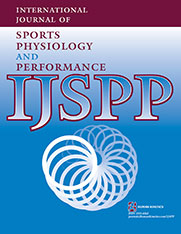
Etude scientifique sur
l'entraînement en hypoventilation (2017)

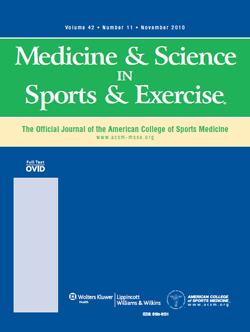
Etude scientifique sur
l'entraînement en hypoventilation (2016)

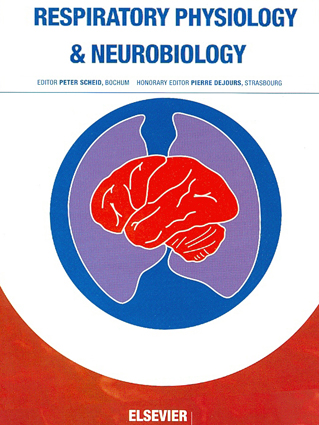
Etude scientifique sur
l'entraînement en hypoventilation (2014)

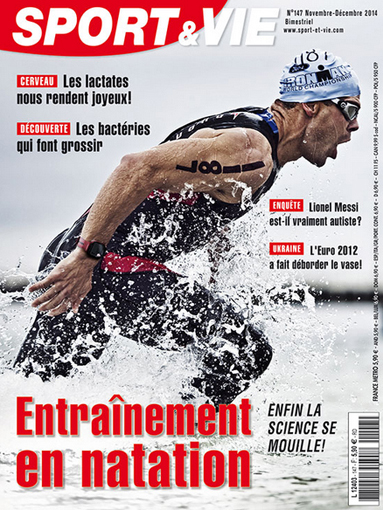
L'entraînement en
hypoventilation en natation (2014)

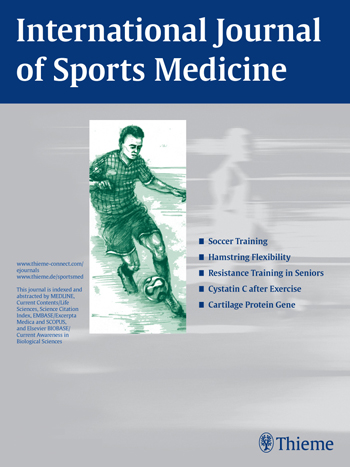
Etude scientifique sur
l'entraînement en hypoventilation (2011)


Etude scientifique sur
l'entraînement en hypoventilation (2010)

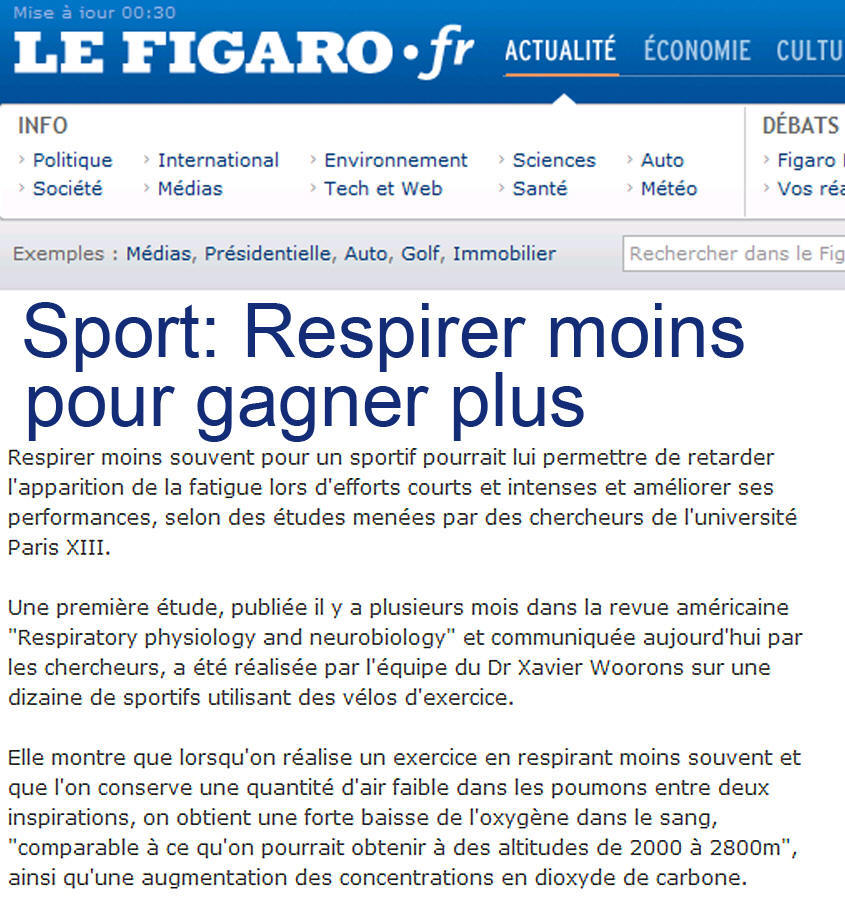
Article de presse sur l'entraînement
en hypoventilation

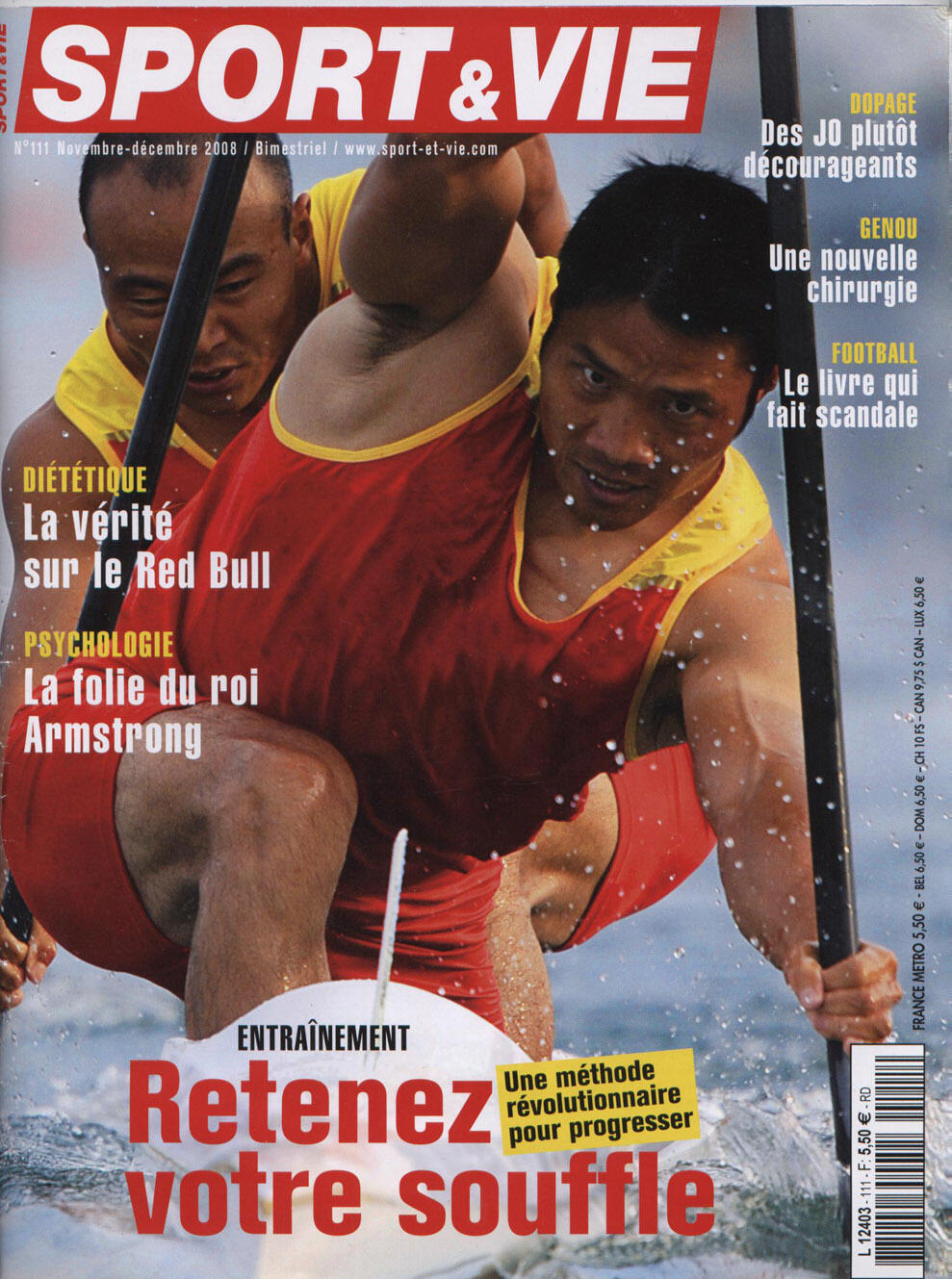
"Bienvenue dans l'hypoxie":
un article sur l'entraînement en hypoventilation


Etude scientifique sur
l'entraînement en hypoventilation (2008)

|